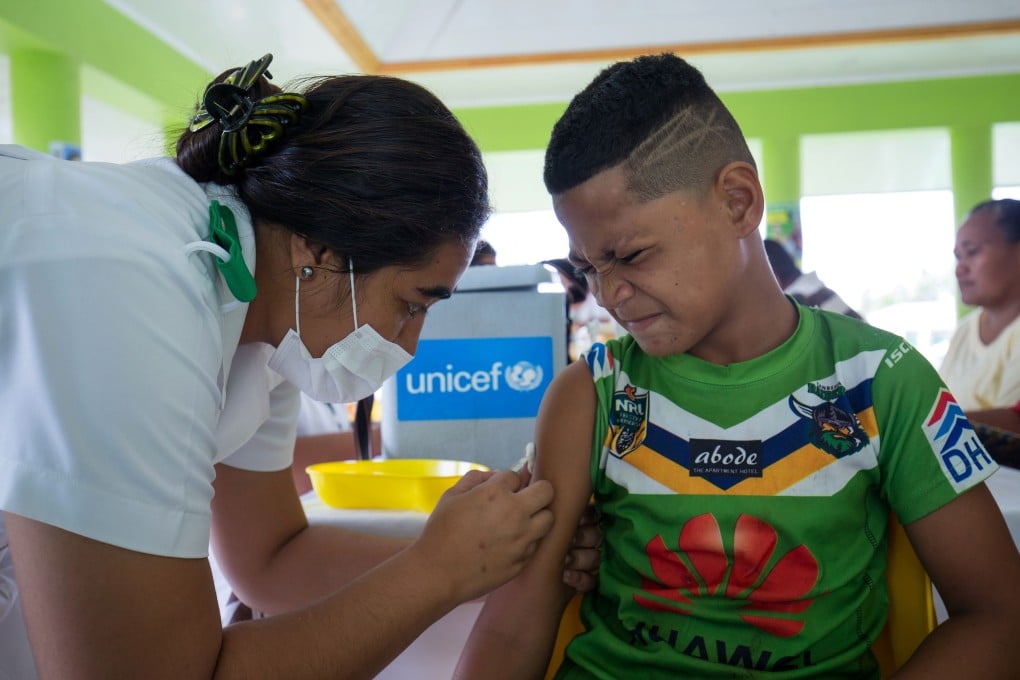How did Samoa’s measles outbreak start?
- Public health experts warn the outbreak is a cautionary tale for any nation where vaccination rates drop below 90 per cent
- The Philippines, which has coverage of just 67 per cent, has the largest outbreak in Southeast Asia with more than 42,000 cases this year

The government on Tuesday told Samoa’s 200,000 residents to hang red flags on the door of any house containing an unvaccinated person. Two days later, even the residence of Prime Minister Tuilaepa Sailele Malielegaoi had a red flag on its gate.
The outbreak came after immunisation rates plummeted to just 31 per cent in the wake of the July 2018 deaths of two infants, who died shortly after receiving a wrongly mixed measles vaccination. The nurses responsible were jailed, but anti-vaccine sentiment spread widely on social media and was played up by anti-vaccination groups outside Samoa.
All but three of the deaths have been people under 20, with more than half of the victims under the age of four. Some families have lost multiple children, and nearly 150 new cases were recorded in the past 24 hours alone.
After declaring a state of emergency and putting the nation on a two-day lockdown to conduct a door-to-door mass vaccination campaign, Tuilaepa’s government on Thursday arrested vocal anti-vaccination campaigner Edwin Tamasese and charged him with incitement.
The government said it had been flooded with anti-vaccination material from groups based in the United States and elsewhere. Communications minister Afamasaga Rico Tupai said anti-vaxxers were hindering Samoa’s mobilisation to immunise 93 per cent of the population.
“Don’t get in the way, don’t contribute to the deaths,” he warned anti-vaxxers.